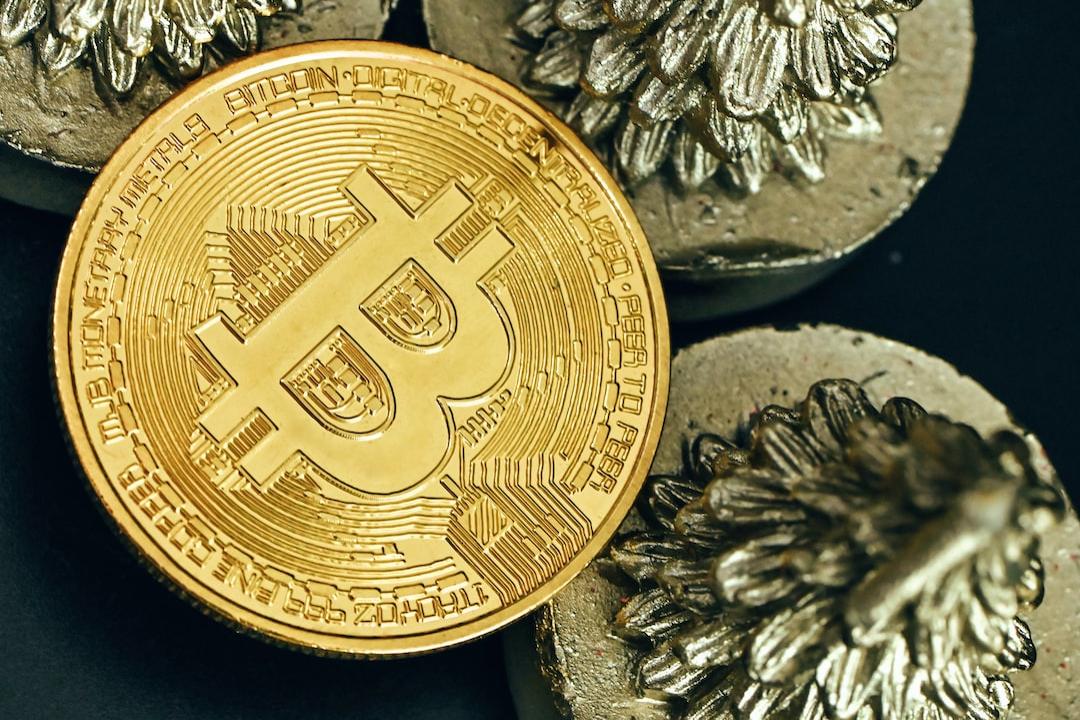Solana and Base’s journey in the Meme industry seems to be like a meeting between a descending deity and an ascending person – one full of past experiences, and the other striving to achieve goals. This article will compare the two platforms from the perspectives of user habits and transaction speed, among other factors, to explore the differences between them.
Table of Contents
1. Characteristics and origins of Meme culture on both platforms
2. User habits: Solana establishing a new ecosystem, Base relying on the Ethereum tree for shade
a. Wallets
b. DEX (Decentralized Exchanges)
c. Trading bots
d. Market panels
3. Code vulnerabilities: Solana’s inherent advantage and Base’s subsequent improvements
4. Contract deployment costs: Base’s lower issuance costs attracting more developers
5. Transaction speed and gas fees: Differences exist but have minimal impact
6. Funding and active users: Base needs a phenomenon-level Meme craze to narrow the gap
7. Official attitudes: Solana hopes for a decline in Meme hype, Base desires to shine in the Meme world
Following Solana, Base has become the hotbed for Meme coins. On May 5th, Base added 2,821 new DEX trading pairs in a 24-hour period, surpassing Solana’s 1,508 pairs. This data trend has persisted for nearly a month, with Base consistently adding more trading pairs daily compared to Solana. Can we consider Base as the new Meme king among public chains, taking over Solana’s position?
In this article, PANews will conduct a comprehensive comparison of Base and Solana in the Meme field, analyzing their differences from various aspects such as user habits, code vulnerabilities, transaction speed, funding preferences, cultural characteristics, and deployment costs. Through this analysis, we will explore the secrets of Meme hype flow.
Meme coins themselves originate from Meme culture, which typically refers to cultural fragments spread through the internet, such as images, videos, texts, or concepts. They often contain humorous elements and can quickly gain widespread dissemination online. Therefore, although Meme projects differ from other types of projects, they still require a certain amount of Meme culture material as the core for dissemination. Thus, the more well-known and widely spread the Meme material is, the better its dissemination.
Meme coins on Solana did not receive much attention in the previous market. The rise of Meme culture on Solana can be traced back to September 6, 2023, when Anatoly, co-founder of Solana, appeared at the annual Solana Breakpoint event wearing a green dinosaur costume and referred to himself as a silly dragon. On November 8th, Anatoly posted on social media, calling it the “year of the silly dragon” and urging the community to create a silly dragon Meme. Subsequently, the SILLY token was deployed based on the community’s expectations and distributed through leaving wallet addresses on social media.

In fact, this issuance process also represents the origin of Meme culture on the Solana network. It was initiated by the founders, with multiple interactions between the official team and the community. After the explosive spread, the contract was deployed, attracting more people to join.
During the recent hype of “giving money away,” Solana experienced a Meme climax. The rise of this trend was mainly due to Solana’s large user base, which spontaneously formed a pattern while searching for quality Meme targets. In other words, Solana’s Meme culture characteristic is that users find materials from Meme culture with the vision of becoming rich.
Unlike Solana, Base has a more distinct American style and a strong association with Coinbase, the largest cryptocurrency exchange in the United States. The cultural attributes of Meme coins on Base also reflect this American style, such as several Meme coins in the top ten holders list: Degen, Jogeco Dog (Coinbase founder’s dog), Ollie Dog (Coinbase’s Chief Independent Director’s dog), ROCKY (MetaWin founder’s dog), Bento (a space dog), BASED USA (Make America Great Again), Young Peezy (another character from the “Boys’ Club” comic series).
In terms of user habits, several factors need to be considered, including wallets, DEX (Decentralized Exchanges), trading bots, market panels, and project information. The usability of these products directly affects the threshold for users to participate in Meme coin speculation.
The wallet on Solana was the first major threshold for attracting users to participate in Meme coins. Unlike the Ethereum ecosystem, Solana uses Rust or C language, so the wallet architecture is completely different. Mainstream crypto wallets like Metamask are not compatible with Solana tokens. Therefore, Solana Meme tokens also benefited from the rapid rise of SOL tokens in the early stages of this bull market, making more people accustomed to using new wallet forms like Phantom.
Base is essentially an Ethereum L2 network, so it is fully compatible with Ethereum in terms of EVM compatibility. This allows users to use familiar wallet products like Metamask for transactions. In addition, Coinbase has introduced the AA wallet, eliminating the need for cumbersome steps for ordinary users. They can directly create accounts using mobile or computer devices, touch ID, or Google accounts. They can also directly connect their Coinbase accounts, laying the foundation for Base to attract a large number of users and funds.
The operation of DEX products on Solana is not significantly different from the Ethereum system. However, Solana has many advantages in terms of speed and operational convenience. Most of the trading pairs on Base are still based on DEX like Uniswap, perfectly compatible with Ethereum users’ habits.
Solana’s Meme hype was accompanied by the early development of Meme trading bots on the Solana ecosystem. Their usage is similar to Ethereum trading bots. Base has fewer trading bots on its network, with products like Sigma and Shuriken, but they do fill the market gap.
Products like Birdeye and Dexscreener are currently compatible with market panels and token information from multiple public chains.
Overall, in terms of user habits, Solana has successfully established an independent system and quickly gained acceptance among Meme players. Base, on the other hand, benefits from the user base advantages of Ethereum and Coinbase, saving a lot of construction costs in this aspect.
As two outstanding Meme ecosystem chains, a quality contract environment is a crucial factor for Meme players to consider. Ethereum and Binance Smart Chain, as the previous main platforms for Meme coins, have had significant issues with malicious contract behavior. According to previous statistics from PANews, about 98% of the Meme coins issued on the Ethereum network daily have code problems.
Solana uses completely different programming languages and architectures, which helps avoid contract vulnerabilities better. General token contract issues only exist in code issuance volume, ownership, and a few other risks.
Base uses the same programming language and architecture as Ethereum, inheriting Ethereum’s vulnerability system. However, Base has implemented a verified contract label on its network, helping users avoid some contract code issues from the source. Nevertheless, according to a research report by Cointelegraph, a security analysis of 1,000 new Meme coins launched on the Base network between March 19th and 25th found that the vast majority of Meme coins on this network have security vulnerabilities that could cause significant losses to users, with almost one-fifth of Meme coins intentionally engaging in malicious behavior.
The cost of deploying a contract on Solana is approximately 1 SOL (around $150), while on Base, it is around a few tens of dollars. This may be a reason why the number of new trading pairs added daily on Base has significantly increased.
The transaction speed on Base is approximately 35 TPS (transactions per second), with gas fees around $0.11. Solana’s transaction speed is approximately 1,300 TPS, with transaction fees around $0.0029.
In terms of comparison, although Solana still has a greater advantage, Base’s speed and cost levels are relatively user-friendly and hardly the main considerations for users.
TVL (Total Value Locked) on Solana is approximately $3.9 billion, while on Base, it is approximately $1.5 billion.
24-hour on-chain trading volume on Solana is approximately $1 billion, while on Base, it is approximately $400 million.
As of May 4th, Base has approximately 8.4 million total users, with approximately 350,000 daily active users.

Solana has approximately 850,000 daily active users.

In terms of liquidity trends, there is a net outflow of $1.77 million from Solana to Base. Overall, the gap between Base and Solana is no longer a difference in orders of magnitude. It may still narrow further with the emergence of some phenomenon-level products.
Apart from these relatively objective factors, the role of official promotion is also an important part of Meme coin development. Solana’s Meme craze was initiated by the founders and received multiple endorsements from the official team. Currently, it seems that Solana’s official team does not want to be solely associated with Meme chains. In April of this year, Raj Gokal, co-founder of Solana, tweeted that Meme coins are scaring away serious builders. However, he reminded these builders that if they are so fragile as to be afraid of young people choosing permissionless systems for entertainment, then they will never succeed. Previously, after experiencing the “giving money away” craze, Toly, co-founder of Solana, also called on the community to stop the practice of presale.
On the other hand, Base seems to have a different attitude towards Meme coins. Also in April, Jesse Pollak, the protocol lead of the Base ecosystem, stated that Meme coins are an important part of the on-chain economy and he is pleased to see more diffusion based on Meme coins, helping the world enter the on-chain era. He noted that Base’s ecosystem is vibrant and has noticed that these Meme coins are now bringing thousands of people into this new economy. He mentioned an exceptionally active Meme economy that is flourishing in the Base ecosystem.
Overall, Solana and Base’s Meme journeys seem to be like a meeting between a descending deity and an ascending person – one full of the past and the other striving to achieve goals. Objectively, both platforms have the necessary foundations for Meme culture, such as product characteristics, distinct community cultures, and a large user base. Subjectively, Solana, as a beneficiary of this bull market’s Meme coins, has also felt the backlash of Meme hype on the development of other projects. Therefore, they hope to reduce Meme’s temperature to balance ecosystem development. On the other hand, Base hopes to use Meme as a window to enhance the ecosystem’s vitality and continue climbing towards the peak of Meme coins.
Related Reports
Tutorial: How does the Meme leader Degen participate in the Base ecosystem and cross-chain?
mfers founder launches Meme coin $mfer on the Base network! Soars 20,000 times in a single day, with a market cap of $230 million
$DEGEN, AERO break historical highs, is Base continuing the Meme coin frenzy?


